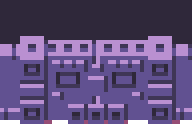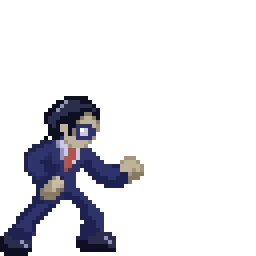Directing Amoriem Labs
Over winter break of my first year at Yale, I paused in the middle of watching a playthrough of Toby Fox’s Deltarune, the sequel to his internet megahit indie game, Undertale. Toby Fox became a sort of legend in the game development world as the sole creator of Undertale, a college student who somehow had the coding, musical, artistic, storytelling, and marketing prowess to create one of the most influential indie games of all time.

Undertale sold over 3.5 million copies worldwide. One of the game’s main characters is currently playable in Super Smash Bros. And Toby Fox recently contributed music to Pokemon Sword/Shield as a guest composer.
I wondered whether us students at Yale had that same talent and ingenuity. The answer came immediately — we undeniably did, but alone I certainly could not accomplish what Toby did.
So I sent this email to our CS majors panlist, with one of my main worries being my then-lack of programming experience.
I got over twenty responses from people saying they were so surprised that a Yale game studio had never been created before, and that they’d love to contribute their various skills. I hosted meetings every week in the spring semester, testing out our skills in programming, digital art, animation, music composition, storytelling, and game design, and planning a proof of concept game release for Bulldog Days, Yale’s pre-frosh gathering in April.
A snapshot of the game we ended up making:

What we came up with was Amoriem, which is an anagram of memoria (“memory” in Latin) and includes the words amor (“love” in Spanish) and mori (“to die” in Latin), the three central themes of our game. This game was a dungeon-based local multiplayer game where two characters work together to escape levels.
Their story, slowly revealed through gameplay, was that they were twins involved in a car crash trying to regain their memories. The twist was that, despite needing to collaborate to finish each level, only one person could escape the final level and survive their "coma."
We coded this demo using Unity Game Engine, which uses C#. To compose maps from map tiles, we used Tiled Map Editor, and for all asset creation we used Adobe Photoshop.




I personally specialise in non-human sprite creation and animation. In other words, I worked a lot with drawing and animating everything but the human sprites (maps, tiles, objects, etc). I also developed a centralized managing system for our artists to share assets (which involved Trello, Dropbox, and Github).

In both April and August, we demo’ed this game to incoming first-years, hoping to attract students interested in indie games and wanting to learn more about game development. We got over 90 sign-ups — affirming my original instinct that there is a robust game-loving community at Yale!
In the meantime, we also worked on establishing ourselves as a campus presence. After working out the bureaucratic and financial logistics of being an officially registered club at Yale, we worked on rebranding ourselves.
Originally, we called ourselves YGames. After the semester, we decided to rename ourselves to Amoriem Labs, after our first game, and went through a couple iterations of a logo design. One of our first-years designed the logo below on the right for us:


Today, we are working on a retro fighting game (think Streetfighter) called Bulldog Bash. The main characters are prominent Yale administrators and our mascot, Handsome Dan!
For this game, we are using GameMaker Studio 2, which uses GML (GameMaker Language). We are using a hybrid of Photoshop and Pyxel Edit for all asset creation. We are still perfecting our version control protocols on our organizational Github!




The last image is a map created by our talented lead artist, Jack Li '23, and is based off of Yale's iconic old campus.
From a directing standpoint, I am continually amazed by the talent and creativity passing through this club. We are so lucky to have the support and interest from students as we do, and I look forward to what we can accomplish in the coming year!



